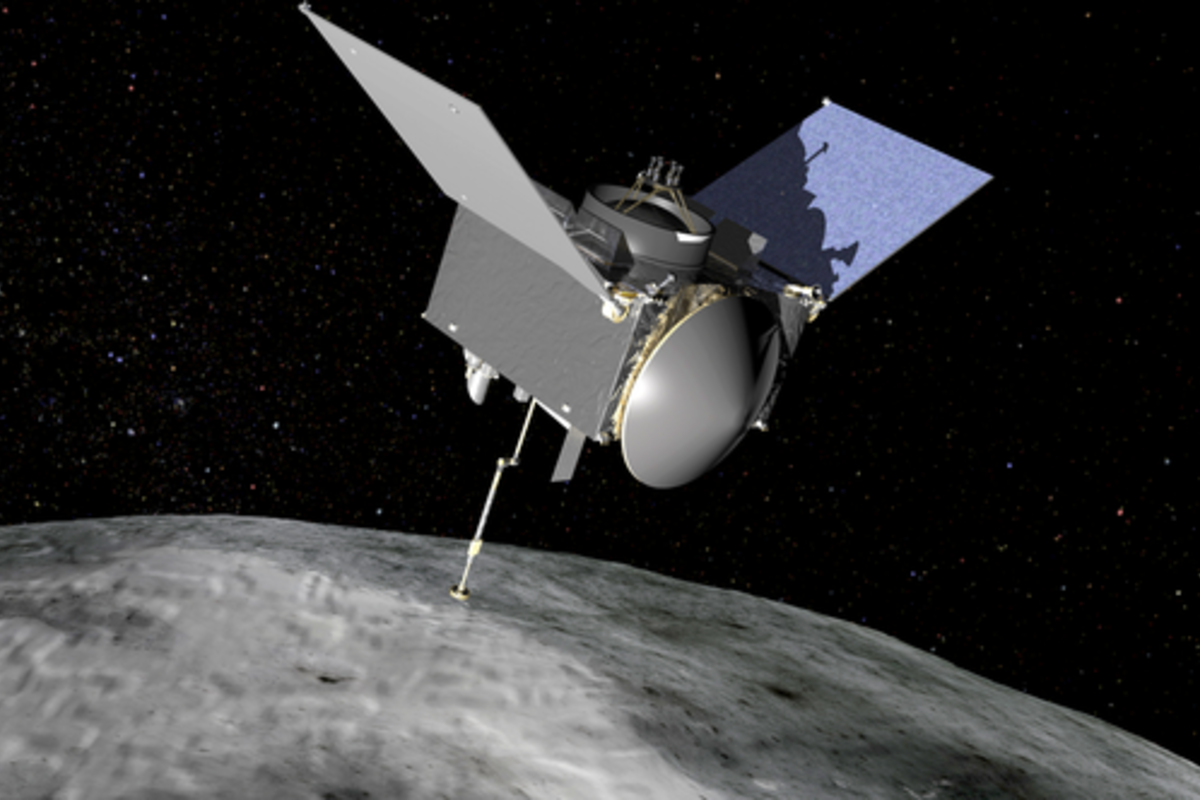
After arriving on Earth in late September, a sample from the asteroid Bennu will be analyzed at NASA’s Johnson Space Centre in Houston.
The valuable cargo is currently aboard OSIRIS-REx, a US space probe dispatched to Bennu in 2016 that orbits the Sun at an average distance of around 105 million miles (168 million km).
Long white sleeves hang from the massive metal and glass box that will house the sample.
Scientists will extract portions of the rock and dust for immediate study, while carefully conserving the remainder for future generations with greater technology – a practice that began with the Apollo missions to the Moon.
“We don’t expect to find any living organisms, but rather the building blocks of life”, Nicole Lunning, lead OSIRIS-Rex sample curator, told media.
“That’s really what motivated going to this type of asteroid, to understand what the precursors were that may have fostered life in our solar system and on Earth”, Nicole Lunning added.
Lunning’s duty will be to meticulously deconstruct and segregate the contents of the return vessel once it arrives in the Texas cleanroom, all while keeping the material pure and uncontaminated.
The spacecraft is planned to land in the Utah desert on September 24 with an estimated 8.8 ounces, or 250 grams of material – slightly more than a cupful.
It was obtained through a high-risk operation in October 2020: the probe made brief contact with the asteroid, and a burst of compressed nitrogen was emitted to elevate the dust sample, which was subsequently caught.
The entire mission was jeopardized when NASA discovered a few days later that the collection compartment’s valve was failing to seal, allowing fragments to escape into space.
However, the valuable payload was eventually secured after being relocated to a capsule located in the spacecraft’s centre.
Japanese probes brought the first samples transported to Earth by asteroids in 2010 and 2020, with the latter containing uracil, one of the building elements of RNA.
The discovery lends credence to a long-held notion that life on Earth may have been seeded from outer space when asteroids bearing essential ingredients collided with our planet.
Eve Berger, a cosmochemist, is eager to get started on the Bennu substance.
“These samples have not yet arrived on Earth. They have not been exposed to our environment. They haven’t been exposed to anything other than harsh space for billions of years”, she explained.
Finally, they will help us determine whether what we think is true is true, according to Berger.
“The Bennu sample may not only add to our understanding of the components that gave our globe life but if we can figure out what happened here on Earth, that helps us extrapolate to other bodies where we might look or how we might interpret what we’re seeing”, she noted.
Could Bennu bring something never seen before back? You never know”, Berger replied.
Berger continued, “Because Bennu is a liar, we’ll find out more in a few months when the sample is returned — that would be exciting!”
Also read: US Investigation Into Harvard University’s Legacy Admissions Policy
To read more such news, download Bharat Express news apps


















